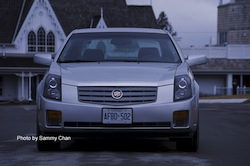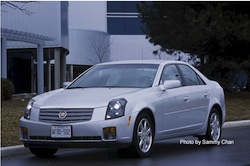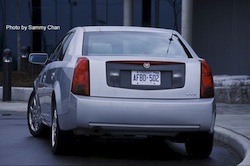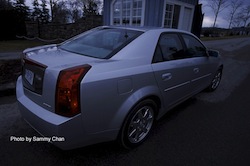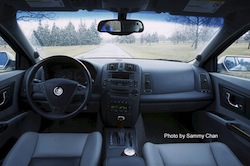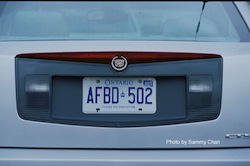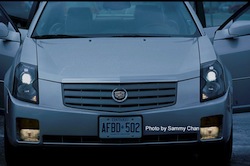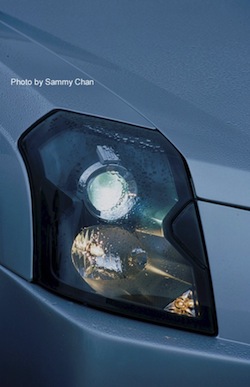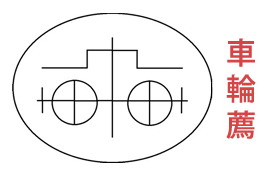
2003 Cadillac CTS
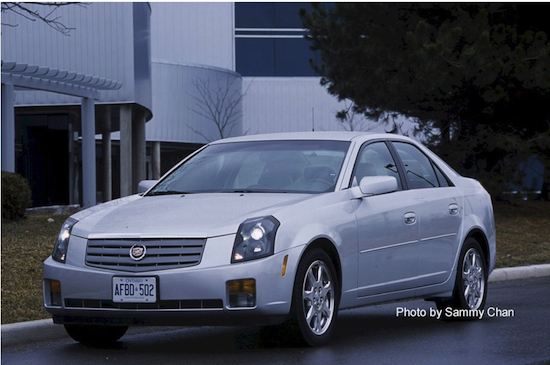
Written by: Cadillac Canada
Photography by: Sammy Chan
With styling beyond bold, the new 2003 Cadillac CTS - the first 100 percent application of Cadillac's art and science approach to passenger car design - made its debut on Aug. 18th at the Pebble Beach Concours d' Elegance in Monterey, California.
CTS builds on Cadillac's 100-year tradition of engineering excellence and design innovation. Its chiseled body is lean, with sheer forms, sharp edges and crisp intersecting lines. The design philosophy hearkens back to a time when Cadillac routinely made bold design statements. This design heritage began in 1927 when Harley Earl, who later became General Motors' first design vice president, created the LaSalle as the smaller companion car to Cadillac.
"In our first century of existence, many memorable designs have set Cadillac apart from the other luxury cars in the crowd," said Mark R. LaNeve, Cadillac general manager. "CTS will turn heads in a segment that typically refines, rather than defines, automotive styling. It's a modern interpretation of the strikingly beautiful cars for which Cadillac became famous. In short, it's a classic Cadillac for the 21st century."
In addition to its expressive design, CTS connects to Cadillac's storied past with its performance. Built on an all-new rear-drive architecture, Cadillac's new performance sedan will be available with a manual transmission mated to a 3.2-liter V6 that powers it from 0-60 mph in less than seven seconds. CTS also represents a sea change in Cadillac nomenclature.
When GM began work on the CTS, it didn't want to do a 'me, too' design. The Cadillac design team gave CTS a look all its own - a look that's uniquely American. It reflects the current Cadillac design philosophy first showcased on the Evoq concept car, one that communicates American technology and science. From computer-generated forms to high-tech, aerospace-influenced materials and textiles, these designs will showcase technology and an overt expression of craftsmanship. For CTS, the result is a standout exterior design that features crisp intersections, a short front overhang and sharp edges that produce a diamond-like quality, yet in a clean, simple, uncluttered presentation.
The CTS design team had two objectives for the profile view: Use the feature line as the dominant theme, and accentuate the stance of the vehicle. The rear track of CTS is a fixed design point, as is the fender flare. The vehicle sides were tucked in slightly to enhance that flare for a more tailored look. The sail panel also enhances the "fast formal" look, giving CTS a sportier appearance. Simple but dramatic, the hood kicks up into the fender line for a sweeping, dynamic look Cadillac's traditional vertical headlights and taillights first appeared on Cadillacs in 1965. CTS' integrated headlights convey the high-tech image of optical instruments and high-end camera lenses. Thin and tall, they create more space for the large louvered egg-crate grille - another Cadillac staple, this one dating back to 1934. The shield-shaped grille houses the new wreath and crest and has a V-shaped bottom. The rear view complements the front, with a full-color wreath and crest on the center line and a full-width V-shaped CHMSL.
The interior provides all the amenities that luxury customers have come to expect, with the emphasis on comfort and convenience. It makes use of warm, rich, inviting materials and colors, using wood only in areas where the customer will contact it, such as on the steering wheel, shifter knob and Designed from the ground up with an exclusive rear-wheel-drive architecture, dubbed Sigma, the new CTS was tested extensively and refined on the most challenging race circuit in the world, Germany's famed Nürburgring.
The new 3.2-liter V6 powering CTS in North America is a completely re-engineered version of the 3.0-liter V6 in its predecessor. The engine makes 220 hp at 6000 rpm and 218 lb-ft of torque at 3400 rpm. The engine has been fully revised to improve driveability, power, torque and emissions. While most V6 engines use a 60-degree inclination, the CTS team chose a 54-degree bank angle to accommodate the packaging requirements of CTS. The 54-degree angle between the cylinder banks is unique among GM four-camshaft V6s. This compact packaging makes it appropriate for both transverse and longitudinal The 5L40-E also has the unique ability, in Sport mode, to identify high-performance inputs from the driver and hold a gear indefinitely through a corner after the driver's foot is lifted off the accelerator pedal.
The Sigma architecture has been especially designed for rear-wheel drive vehicles, and can accommodate all-wheel drive as well. It's a robust, versatile foundation for CTS.
Pricing: Standard equipment includes a BOSE 8-speaker system with an integrated 6 CD changer, as well as heated front seats.
Base MSRPs (excluding tax. Destination freight charge is $1050):
Cadillac CTS $39,900
Cadillac CTS Deluxe $42,450
Cadillac CTS Sport $44,360



